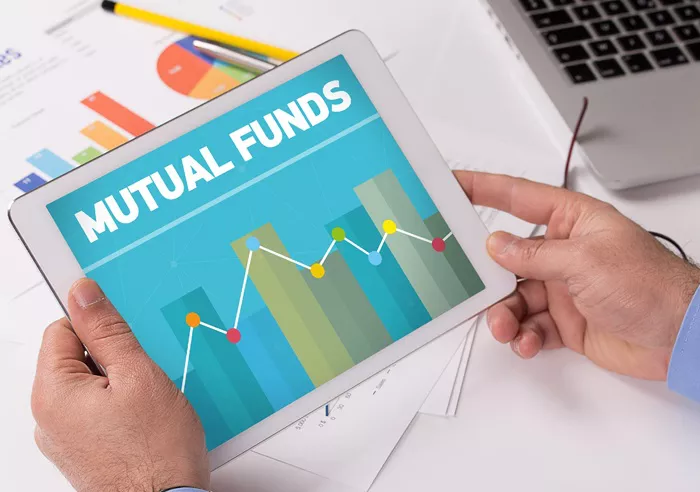In the world of investing, especially when it comes to mutual funds, you may frequently encounter the term NAV. NAV, or Net Asset Value, is a crucial concept that plays a significant role in how mutual funds are valued, traded, and analyzed. Understanding NAV is essential for anyone looking to invest in mutual funds, as it directly impacts the pricing and performance of your investments. In this article, we will delve into the meaning of NAV, how it is calculated, its importance in mutual fund investments, and how investors can use NAV to make informed decisions.
What Is NAV (Net Asset Value)?
NAV stands for Net Asset Value, which represents the total value of a mutual fund’s assets minus its liabilities, divided by the number of outstanding shares. It is the price at which mutual fund shares are bought or sold, and it reflects the fund’s underlying value on a per-share basis.
In simpler terms, NAV tells you how much each share of the mutual fund is worth at the end of each trading day. It is a key metric for assessing the value of an investment in a mutual fund. Whether you’re investing in an equity fund, bond fund, or balanced fund, understanding how NAV works will help you track the performance of your investment.
Key Points to Remember:
NAV = (Total Assets – Total Liabilities) / Outstanding Shares
NAV is calculated at the close of each trading day.
NAV serves as the price of mutual fund shares for transactions.
The Calculation of NAV
Understanding the calculation of NAV is critical to comprehending how mutual funds are priced. NAV is determined by the following formula:
NAV=Total Assets−Total LiabilitiesOutstanding Shares\text{NAV} = \frac{\text{Total Assets} – \text{Total Liabilities}}{\text{Outstanding Shares}}
Let’s break this down:
Total Assets: This includes the value of all the securities (stocks, bonds, etc.) and other investments held by the mutual fund. These are priced at their market value at the end of the trading day.
Total Liabilities: This refers to any obligations or debts the mutual fund owes. It could include management fees, transaction costs, and other expenses the fund has incurred.
Outstanding Shares: These are the number of shares issued by the mutual fund and held by investors. The number of shares can change as new shares are issued or existing shares are redeemed.
How Is NAV Used in Mutual Fund Investing?
1. Pricing of Mutual Fund Shares
The most straightforward use of NAV is as the price of mutual fund shares. Investors buy or sell shares of the mutual fund based on its NAV. This price is updated daily, reflecting the changing values of the securities held by the fund. For example, if you purchase 100 shares of a mutual fund with an NAV of $9.50, your total investment would be $950. Conversely, if you sell those 100 shares the next day at an NAV of $9.75, your total proceeds would be $975.
2. Determining Fund Performance
NAV also helps investors gauge the performance of a mutual fund. Over time, the increase in NAV indicates that the fund’s value has grown, suggesting the fund has performed well. Conversely, if the NAV falls, it may indicate a decline in the value of the fund’s assets, which could be due to poor performance in the market.
Let’s say an equity fund’s NAV starts at $20 per share and rises to $25 per share after one year. This increase in NAV reflects a gain of 25%, which would be the fund’s return to investors (excluding any fees, dividends, or distributions).
3. Reinvestment of Dividends
Mutual funds often distribute dividends or interest payments earned from the securities in their portfolios. These payments can be reinvested into additional shares of the fund. The NAV is used to determine the number of additional shares you will receive when you reinvest dividends. For example, if the fund’s NAV is $10 and you receive a dividend of $100, you would get 10 additional shares of the mutual fund ($100 dividend / $10 NAV = 10 shares).
4. Tax Implications
NAV also plays a role in tax implications for mutual fund investors. Mutual funds are required to distribute capital gains to shareholders if they sell securities in the fund’s portfolio for a profit. These capital gains distributions are based on the increase in NAV. Investors may be subject to taxes on the distributions they receive, depending on their tax situation.
Importance of NAV for Mutual Fund Investors
NAV is an important metric for mutual fund investors for several reasons. It is a tool that helps investors assess the value of their investments, make informed decisions about buying or selling mutual fund shares, and track the performance of their portfolios. Here are some ways in which NAV is important for investors:
1. Transparency
The calculation of NAV provides transparency to investors. By knowing the NAV, investors can understand how much their investments are worth at any given time. Since NAV is publicly available, investors can easily track the value of their shares.
2. Performance Evaluation
NAV is a simple and effective way to evaluate the performance of a mutual fund. By comparing the NAV at different points in time, investors can gauge whether the fund has been performing well or poorly. While the NAV alone does not give a complete picture of a fund’s performance, it is a key component in assessing its returns over time.
3. Comparing Funds
Investors use NAV to compare mutual funds. While the NAV per share is not directly comparable between funds (since each fund has a different share count and asset base), the growth in NAV over time can help investors assess which funds are performing better. Investors often compare the performance of a fund’s NAV against a benchmark index, such as the S&P 500, to evaluate its relative success.
4. Investment Strategy Decisions
NAV can also inform decisions on whether to buy or sell a mutual fund. For instance, if an investor sees that a fund’s NAV has increased over time, they may decide it is a good time to invest in the fund. Alternatively, if a fund’s NAV has declined consistently, they may choose to sell their shares to avoid further losses.
Factors That Affect NAV
Several factors influence the daily movement of NAV. These factors primarily relate to changes in the value of the assets held by the mutual fund. Some of the key factors that affect NAV include:
1. Market Conditions
The performance of the stock market and the bond market directly impacts the value of the mutual fund’s portfolio. If the stock market performs well and the value of the securities in the fund’s portfolio increases, the NAV will rise. Conversely, if the market declines, the NAV will likely decrease.
2. Interest Rates
Changes in interest rates can affect bond prices, which in turn can affect the NAV of bond-focused mutual funds. When interest rates rise, bond prices generally fall, leading to a potential decrease in NAV for bond funds. Similarly, lower interest rates can increase the value of bonds and the NAV of bond funds.
3. Dividends and Distributions
The payment of dividends and capital gains distributions also affects NAV. When a mutual fund distributes dividends or capital gains, the NAV typically drops by the amount of the distribution. However, this is a normal occurrence, and investors receive the distribution in cash or as additional shares.
4. Management Fees and Expenses
Management fees and operational costs can reduce the NAV of a mutual fund. These fees are deducted from the fund’s assets before the NAV is calculated. High fees can erode returns, which may lead to a lower NAV over time.
NAV vs. Market Price: Key Differences
While NAV is a vital measure for mutual fund pricing, it’s important to understand that it differs from the market price of exchange-traded funds (ETFs) or other securities. Here’s a quick comparison:
NAV is the value of the mutual fund’s assets on a per-share basis, calculated at the end of each trading day.
Market Price refers to the price at which an ETF or stock trades on the market. ETFs, unlike mutual funds, are traded throughout the day, and their market prices can fluctuate based on demand and supply.
Mutual funds are bought and sold based on their NAV, while ETFs can be bought or sold at any time during market hours at their current market price, which may differ from their NAV.
Conclusion
NAV, or Net Asset Value, is an essential concept in the world of mutual fund investing. It represents the value of a fund’s assets per share and is used to price mutual fund transactions. Understanding how NAV is calculated and what factors influence it is vital for investors looking to make informed decisions about their investments. Whether you’re new to mutual funds or a seasoned investor, keeping an eye on NAV can help you assess the performance of your investments and make strategic choices about buying, selling, and holding shares in a mutual fund.
By understanding NAV, you gain insight into how your investments are performing and can make more confident, informed decisions about where and when to invest.
Related topics:































